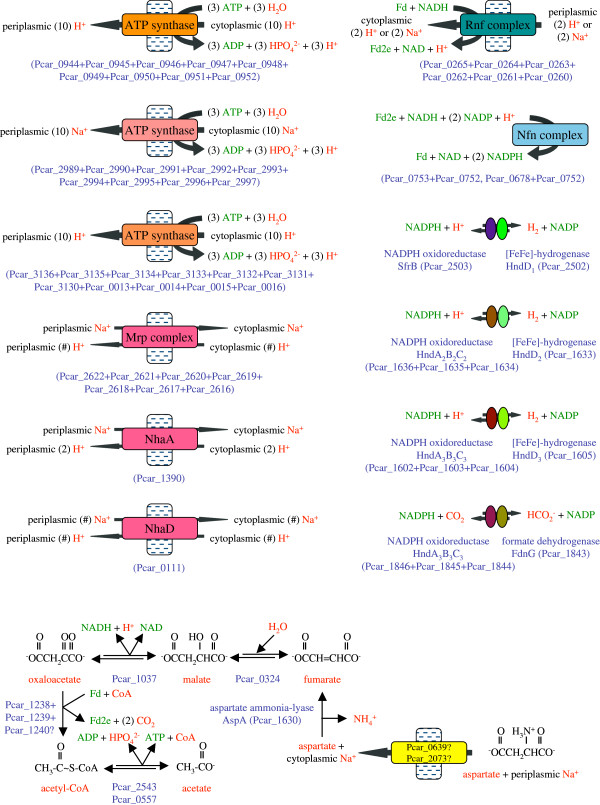Figure 5.
The hydrogen/formate production pathway in P. carbinolicus. ATP derived from substrate-level phosphorylation is used to generate transmembrane gradients of protons and sodium ions. This energy is used to exchange NADH for doubly reduced ferredoxin (Fd2e) so that NADH and Fd2e can be exchanged for NADPH, which donates electrons to hydrogenases and formate dehydrogenase. The lower part of the figure depicts how the aspartate ammonia-lyase encoded among hydrogenase assembly genes might function in an ATP-producing pathway with electrons released as hydrogen or formate. An uncharacterized 2-oxoacid:ferredoxin oxidoreductase complex is hypothesized to be a novel enzyme, oxaloacetate:ferredoxin oxidoreductase, analogous to enzymes that convert 2-oxoglutarate to succinyl-CoA and pyruvate to acetyl-CoA.

